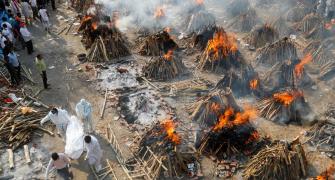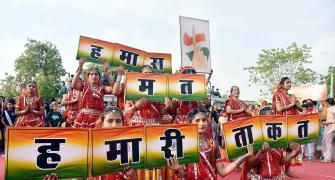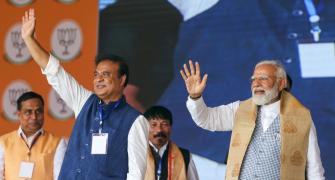29 years ago, Karnataka was hurled into a huge political crisis after MLAs withdrew support to S R Bommai's Janata Dal ministry.
As the governor recommended that the chief minister be dismissed and President's Rule imposed in the state, then President R Venkataraman disagreed with Rajiv Gandhi's Cabinet and argued that 'the question whether a ministry commanded the confidence of the assembly should be tested in the House and not by the governor.'
A fascinating excerpt from President Venkataraman's My Presidential Years, published with the kind permission of the publishers HarperCollins India.
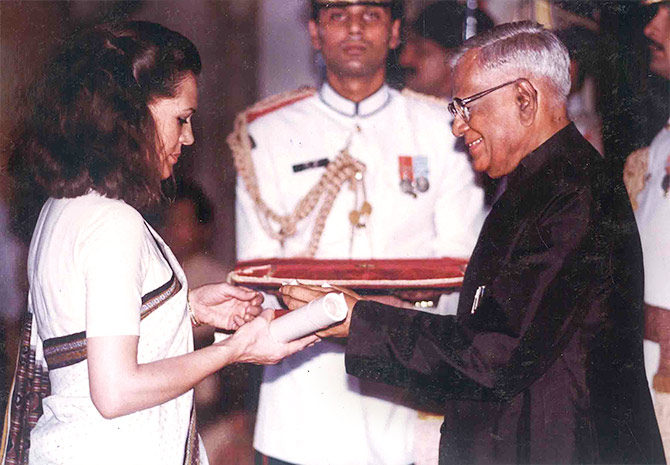
The Janata Party under Ramakrishna Hegde had formed the government in Karnataka in March 1985. Later, Hegde resigned as chief minister following allegations that he had authorised illegal tapping of telephones of various leaders.
S R Bommai was elected leader by the Janata Legislature Party in place of Hegde, and formed the ministry in August 1988.
When the Janata Party split into the Janata Dal and Janata Party, Bommai continued as leader of the Janata Dal.
The position in the Karnataka assembly of 221 members was that the Janata Dal had 111 members and was supported by seven Independents, while the Congress-I had 65 members and the Janata Party, 27.
Bommai was expanding his cabinet from time to time, the last being an addition of 10 ministers on April 15, 1989.
It is well known that a single appointment creates a dozen disappointments.
On April 19, 19 members of the assembly wrote to Governor Venkatasubbiah that they were withdrawing their support to the Janata Dal ministry.
The governor, after getting the signatures verified by secretary to the legislature, came to the conclusion that the council of ministers headed by Bommai did not command a majority in the assembly.
On April 20, Minister Rachaiah presented to the governor letters from seven members withdrawing their earlier communication.
The governor reached the conclusion that there was a lot of horse-trading going on in the Janata Dal and recommended imposition of President's Rule and dissolution of the assembly under Article 356 of the Constitution.
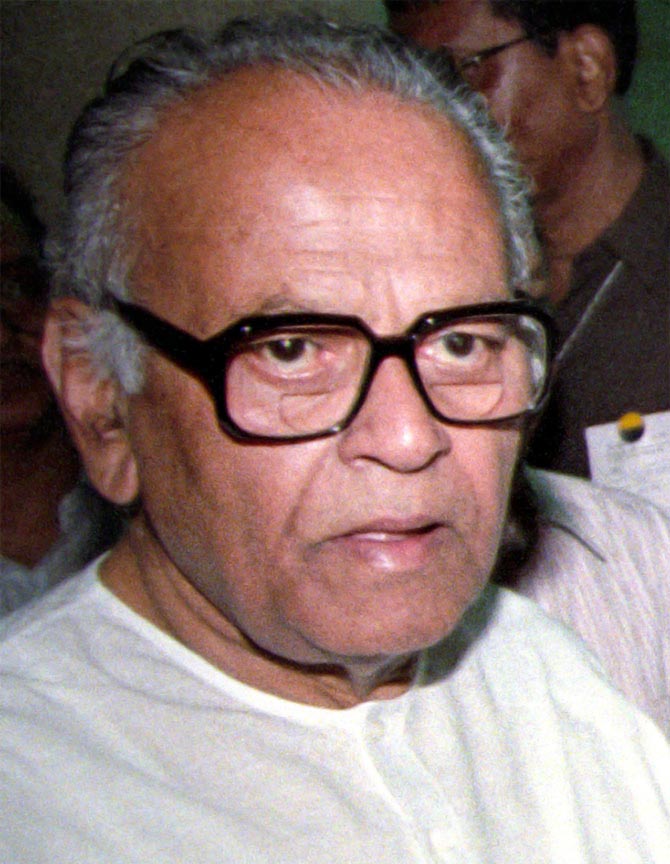
During all this period I was on a tour of Tamil Nadu and was in Ootacamund on April 19. The Tamil Nadu Governor, Dr P C Alexander, hosted a reception for me that evening and about seventy guests attended it.
At the end of the reception I was told that Home Minister Buta Singh wanted to speak to me urgently on the secret phone. The secret phone, however, did not function -- not an unusual occurrence -- and we talked on the regular one.
The home minister gave an account of the happenings in Karnataka and of the recommendation of the governor for imposition of President's Rule and dissolution of the assembly.
He said that horse-trading was going on and lakhs of rupees were being passed to purchase support.
I told Buta Singh that the proper course for the governor was to ask the ministry to take a vote of confidence in the assembly and that the drastic action of dissolution would recoil on the central government.
But Buta Singh said the Cabinet had met and decided to accept the advice of the governor. I said if the Cabinet had taken a decision I would abide by it.
Buta Singh then conveyed to me that the file would be sent to me by a special courier for signature.
I thought that my views should be made known to the prime minister and so I rang up Delhi to say that I was cutting short my tour and returning by lunch time on April 20 and that the file need not be sent to me.
I returned to Delhi at 2 pm on April 20. There was a request from Opposition leaders for an appointment with me and I instructed Secretary Prem Kumar to give one at 3.30 pm.
R K Dhawan rang up and wanted to see me before I met the Opposition leaders. Since he was now being used as a channel of communication with the prime minister, I readily agreed so that my views could reach the prime minister.
I told Dhawan that the question whether a ministry commanded the confidence of the assembly should be tested in the House and not by the governor and that under the Constitution, the ministry should command a majority of the members present in the assembly and not a majority of its total membership.
I pointed out that Indira Gandhi, after the Congress split, did not have a majority of the Lok Sabha membership but still had the support of other parties to command a majority and carried on her government till 1971.
For all these reasons I asked Dhawan to convey to the prime minister that no action need be taken on the governor's recommendation till April 27 when the Karnataka assembly would meet and decide the issue.
Dhawan said I should have been consulted before and that the situation had become awkward as the Cabinet had already endorsed the governor's recommendation.
Dhawan promised to convey my views to the prime minister.
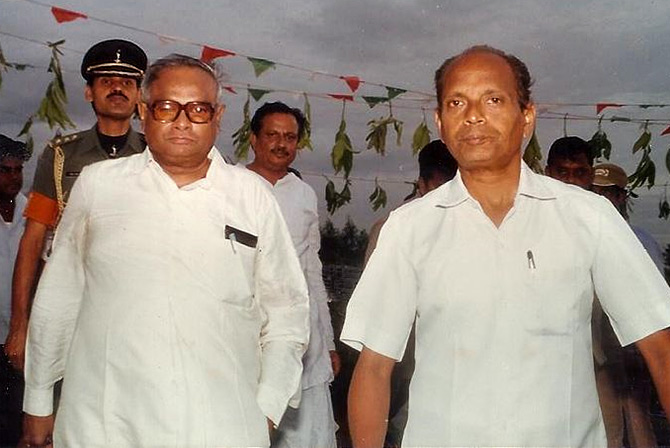
At 3.30 pm Opposition leaders V P Singh, Devi Lal, Madhu Dandavate, Biju Patnaik, V C Shukla, N T Rama Rao and others called on me and presented a memorandum.
They urged that the issue of majority for the government should be tested in the assembly and quoted the Sarkaria Commission recommendations (on Centre-State relations) in support.
They also asked what I would do if a number of members of Parliament submitted a memorandum to me withdrawing support to the prime minister. I merely smiled.
They also requested that as President I send back the recommendation for reconsideration by the council of ministers.
I pointed out to them that I was bound by the advice of the Cabinet.
The Opposition leaders raised another important issue. They said that 19 members of the party who presented the memorandum to the governor formed less than one-third of the party strength of 111 and were defectors according to the anti-defection law and the governor should not have accepted the memorandum from them nor acted on it.
I felt there was some substance in this contention and so, after the delegation left, I rang up Dhawan and asked him to convey this to the prime minister.
Home Minister Buta Singh called on me at 6.30 pm and explained that the Cabinet had accepted the governor's recommendation and that it would embarrass the governor if his decision was not implemented.
He also said that the Cabinet had examined all aspects and taken the decision to impose President's Rule.
He wanted the proclamation to be issued the same day to put an end to uncertainty and unfair practices.
I pondered over the situation. The President is not an appellate or supervisory authority over the government.
The responsibility for acts of omission and commission is that of the government and the public criticism sometimes voiced against the President is based on a lack of understanding of his Constitutional limitations.
The formalities envisaged in Article 356 having been complied with, and the government having stood by its decision after knowing my views, I had no option but to comply with Article 74.
I signed the proclamation a little before 8 pm. The Lok Sabha sitting was extended twice up to 8.30 pm and the home minister made the announcement of imposition of President's Rule in Karnataka at 8.15 pm amidst protests.
Challenging the proclamation of President's Rule in Karnataka, the erstwhile chief minister, S R Bommai, moved the Karnataka high court for redress.
The high court, while dismissing the writ petition, ruled that recourse to a floor test of the government's strength in the assembly was neither compulsory nor obligatory on the part of the governor under the Constitution or other law.
The high court said, 'Likewise, we were not shown nor were we able to find any provision in the Constitution or elsewhere which makes it obligatory or compulsory for the governor to test the veracity of support to the ruling party by having recourse to the floor test....'
This opinion ran counter to the advice I gave to the government on the Karnataka case and therefore I felt I should explain the rationale of my view.
The Constitution does not require the council of ministers to have an absolute majority of the total membership of the House.
It requires that the council of ministers 'shall be collectively responsible to the Legislative Assembly of the State.'
Therefore, even if the council of ministers does not have a majority of the membership of the House, it can continue to function as long as it has the majority of members present and voting in the House.
There have been several instances both in India and abroad where the council of ministers did not have a majority of the total membership of the House and yet continued in office since it enjoyed a majority of those present.
Whether the council of ministers enjoys the majority in the House cannot be tested by counting heads on the lawns of Raj Bhavan but only by a floor test.
Apparently this aspect had not been presented to the Karnataka high court.

